KingMike sent in a question that I had wanted to look into for years but totally forgot until now:
So I read about Satoru Iwata recently recovering from surgery. I see some fans have sent him their well wishes with photos of bananas. I’m glad to hear he’s doing alright.
But I was reminded I do have a question about bananas.
In Final Fantasy Legend II for the Game Boy, one of the many worlds you can visit is Edo. While there, you have to help the locals track down a bunch of bad guys for trading… bananas. Was that a clear attempt to censor the game (some say the enemies had opium in the Japanese version) or is there something we don’t know about Japan’s history with bananas?
So I did some searching and here’s a look at a line in the Japanese version and English version of the game:
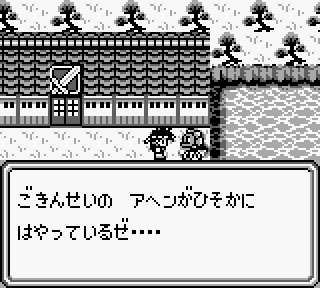 | 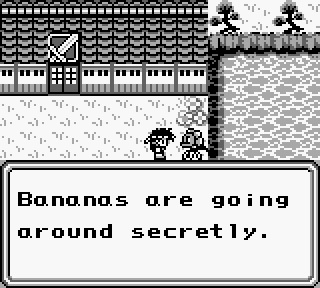 |
| SaGa 2 Hihou Densetsu (Game Boy) | Final Fantasy Legend II (Game Boy) |
And here’s the text side-by-side for easy comparison:
| Japanese Version (basic translation) | English Version |
| Prohibited opium is going around secretly. | Bananas are going around secretly. |
So my old suspicions were correct – this part of the game was originally all about opium, not bananas!
As for what bananas mean in Japanese society, you could probably write a whole paper on the subject, but for a good part of the last century, bananas were really valuable and hard to get in Japan because of wartime import restrictions and other factors. I’m sure someone can provide much more info than I can – I only know that in passing somehow.
Bananas are also a pretty standard get-well gift in Japan. I’m guess it’s because they’re nutritious and tasty, but maybe there’s more to it than that, I dunno. Photos of bananas is new to me, though. Your guess is as good as mine. As some have pointed out, it’s probably also related to this:
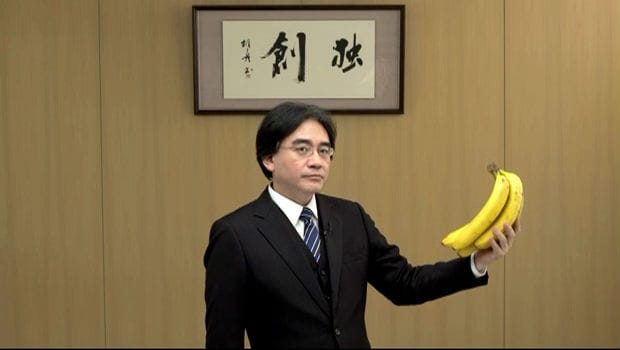 |
Anyway, there you go! Opium and Nintendo games don’t mix, so it’s no surprise they got changed into bananas 😛

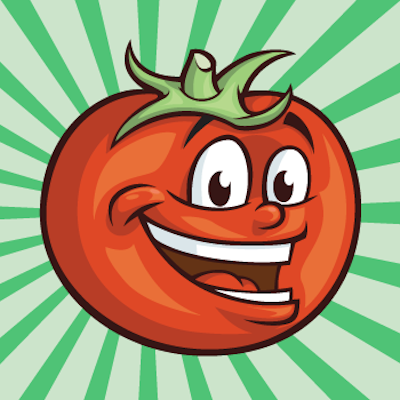
![press start to translate [Final Fantasy IV] press start to translate [Final Fantasy IV]](https://legendsoflocalization.com/wp-content/uploads/2019/08/bbenma.png)
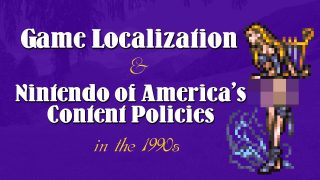
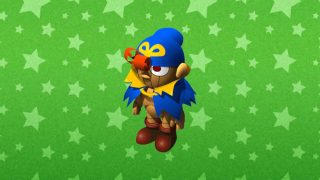
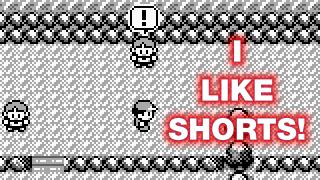
So, Japan was basically like East Germany.
Hmm, when I first read about well wishes with photos of bananas to Satoru Iwata, I must admit I was thinking more about this http://www.destructoid.com/bananas-win-e3-228817.phtml than I thought about it being a get-well gift.
Huh, i guess i didn’t realize a common fruit we take for granted here could be so fancy and desirable in Japan. Incidentally, when i think about Bananas and Japan, this is the first thing that pops into my mind: http://youtu.be/PIicCj2Kl04
I assume you’re not familiar with how highly valuable pepper and certain other spices were in early middle age Europe?
No, I was well aware of that. That was basic history stuff when i was in high school.
…Okay, that’s… Kinda odd. I wonder why the censor team decided to switch opium and bananas. I get the beer to soda pop thing (somewhat), but bananas are a bit odd of a choice. If they were rare and hard to acquire at one time, however, I guess it makes sense. In Japan, at least.
…Than again, I’ve never even heard of Final Fantasy Legend II (Unless it’s the Mana series game that got turned into an FF, anyway), so maybe it makes a ton of sense in context.
Close: It’s a SaGa game.
“The Mana series game that got turned into a Final Fantasy” is a bit of a misnomer anyhow. You’re thinking of Final Fantasy Adventure — which was, in Japan, released as Seiken Densetsu: Final Fantasy Gaiden (聖剣伝説 ~ファイナルファンタジー外伝~ according to Wikipedia, but I don’t read Japanese so I can’t vouch for that — could be a dick joke for all I know). So it’s pretty clear that it’s actually a Final Fantasy spinoff (roughly what “gaiden” means anyhow) from the get-go, and not a different series repurposed in North America.
Whoops. My bad. Sorry, I kinda lose track of the FF spinoffs. So it’s a Gaiden game. So Final Fantasy Adventure would be a kind of side game like Fire Emblem Gaiden was then. Makes sense to me. Thanks.
It’s a SaGa game though? I thought it was slightly different looking than the standard FF type game. I can’t help but wonder why it was released under the FF label instead of its real one, though. …Unless they were trying to piggyback off of the FF name.
The Fire Emblem comparison is a bit of a flawed analogy, though. FE: Gaiden is a side story, but is considered to be one of the main games in the series since it directly ties into the previous game. Ditto for Thracia 776.
FF Adventures is considered to be its own spinoff.
Oh dear. *Facepalm* Heheh, I’m really stupid at times, you see…
So it’s closer to say… The main series FFs to Dissidia or so.
I just thought of the only thing with Gaiden in its name I knew of, heheh… My bad.
SaGa is also a Final Fantasy spinoff, particularly the first game is full of references to older FF games. You even get to fight the legendary Warmech from FF1.
Warmech’s in FFL2 also, if I recall — I believe he’s the last boss you fight before going to the shrine to deal with Apollo.
The entire SaGa series is a spiritual sequel to Final Fantasy II. That’s why FFII feels like a prototype SaGa game.
I have never played this game so I wonder is it a Japanese like world or a European fantasy-style setting?
It’s… eclectic. FFL2 is set in a weird “multiverse” kind of setting, where the heroes travel among different worlds. Some are very western, some very Japanese. There are futuristic worlds, medieval worlds, a world inside one character’s body.
What kind of world is the banana part on then?
It’s a Japan-esque world, as I recall.
Hmm, I know China had its opium wars during the 19th century, but this section in Final Fantasy Legend 2 has more of a Japanese theme going on. Was there a history of opium smuggling in Japan as well?
Assuming the opium thing is a nod to actual history, I guess it’s possible that this FFL2 version of Edo is an amalgamation of multiple cultures… similar to Yafutoma in Skies of Arcadia (which was a primarily Japanese-looking city, yet protected by a Chinese-esque Great Wall).
Whoops, sorry. Didn’t mean to post that as a reply to another comment. 😛
If Ruroni Kenshin is any indication, Opium smuggling was a thing in ancient Japan, too.
Actually, I can answer this one: Opium was first introduced to japan by the chinese, but was banned in the late 1700s because of it’s addictive properties. When the Meji era came, British/India merchants imported to drug illegally in order to try to undermine the imperial rule, very much in the same way that the patriot Sakamoto Ryouma smuggled guns from the americans to the people of Satsuma and Chousu. This chinese branch of the british company tired to establish themselves, but the imperial guards closed them down. In time, during the occupation of Taiwan, the japanese had to face that the taiwanese had a long history of smoking opium, and rather then stamp it out like they did in the homeland, began selling it to the people of Taiwan, and later china, in order to try to gain more control. Following WW2, the japanese banned opium outright, a move no part suggested by the american occupation, and thus has had a silent drug war with the chinese until the 60s/70s, when after the infamous communist riots, the local populace turned against the idea of opium as it was related culture wise to the chinese, and have had a disdain for it ever since.
So, for the game to bring up the opium being banned, for the time it was made in, was incredibly relevant, interestingly enough.
You’re correct; the world is called “Edo” and features a lot of Japanese-styled architecture and characters.
That’s something I’ve always wondered but had completely forgotten about. Thanks for that. : )
Obviously they had to change it, but in a way, by changing it to bananas it actually touched on a cultural thing most U.S. kids (and likely their parents too) would never have known about at the time.
I remember another title (was it a game? An anime?) that had a similar problem, and solved it by changing “opium” to “poppies”, which I thought was pretty clever (since poppies are used to make opium). Though the idea of bad guys smuggling flowers is still kinda silly.
The Toonami airing of Kenshin had the poppy smuggling.
You’re thinking of Rurouni Kenshin I believe.
The first thing I noticed in the side-by-side comparison was not the opium, but that the character is one tile lower in the English version. Is there a particular reason for this? Why are such position changes so common in the first place?
Characters walk around in the game, so it was just a case of the character standing in a different spot when taking the screenshot.
But is opium アヘン okay today in a Japanese game for kids?
I hear they got more strict (When it was re-released/remade in 2003/2006, Tengai Makyou II was cleansed of alcohol references because the main character -a kid- can carry and drink it).
How did the DS SaGa 2 remake handle this?
It looks like “prohibited opium” became “prohibited items/goods” in the DS remake.
I had a hunch something like this would happen.
But witewashing post-2000 re-releases in Japan seems like a trend 🙁 (Mother 2, Tengai Makyou II, Tengai Makyou IV…)
Does Nintendo do this in the Japanese Virtual Console re-releases? I’m aware of cases like Super Mario RPG (UK), Startropics (all), and the German Secret of Mana, but what about the Japanese side?
I don’t know much about other games, but for Mother 2 I do know that some text was changed for the GBA re-release (mostly text relating to poop and pee) and then a couple more lines were changed for the Wii U VC release.
I’m sure someone out there has documented similar changes to other Japanese games, but I’m not sure where.
What sort of censorship did the re-releases of Super Mario RPG and Startropics go through? I can’t recall anything particularly offensive in the English translations of those two games, unless they actually censored boss battle with Valentina in Mario RPG.
I don’t know about censorship, but for the StarTropics re-release they changed all references of “yo-yo” to “star” because Yo-Yo is a trademarked name in Canada or something.
Interesting. The more you know!
Super Mario RPG had “bugger” changed to “pest” in the UK, because “bugger” is considered a low-level swear word here – nothing outrageous, but probably something you wouldn’t expect to see in a Mario game.
“probably something you wouldn’t expect to see in a Mario game.”
Ted Woolsey translated Super Mario RPG so I’m not really surprised
One fun thing about the change from opium to bananas is they include one guy who calls out how weird it is.
“I don’t know why, but bananas aren’t allowed on this world.” (Or something to that effect.
For years, I thought that the banned item was originally tea because I’d read that the Shogun had banned tea at some point in the feudal era.
I just read the manga One Punch Man, and there’s this funny scene where the main character visited a bunch of people in the hospital and brought them all bananas, but then proceeded to eat the bananas himself. 😀 That scene immediately reminded me of this article.
RIP Satoru Iwata ;_;
I’m playing through the Japanese version now and caught another bit of “too hot for NOA” material in this world: When the constables come looking for Kame midway through the chapter, Hana says, “He got his salary today. He must have gone on a date or something.” In the Japanese version, she says 今日はお給金をあげましたから吉原でも遊びに行ったのでしょう (I paid him today, so he probably went out to Yoshiwara). Yoshiwara was Edo’s main red light district.
Yoshiwara was the brothel district, which is exactly what it is to this day, in fact.
In the game, the mastermind of the opium smuggling is a merchant called “Echigo-ya (越後屋)”, which sounds like “strawberry merchant (イチゴ屋: Ichigo-ya)” in Japanese.